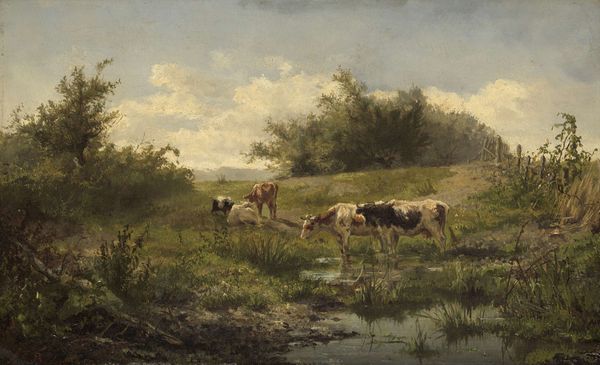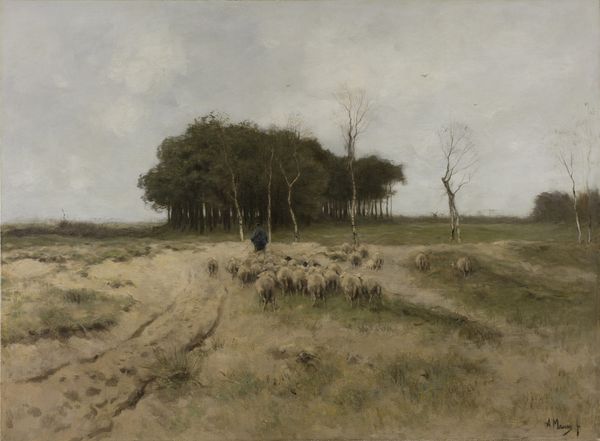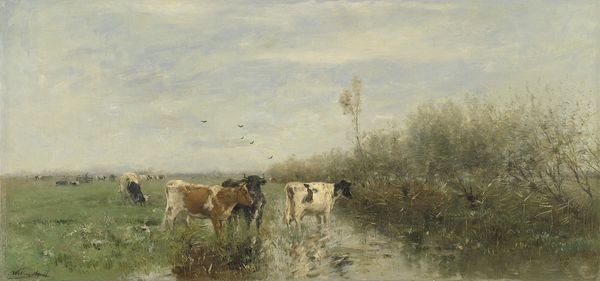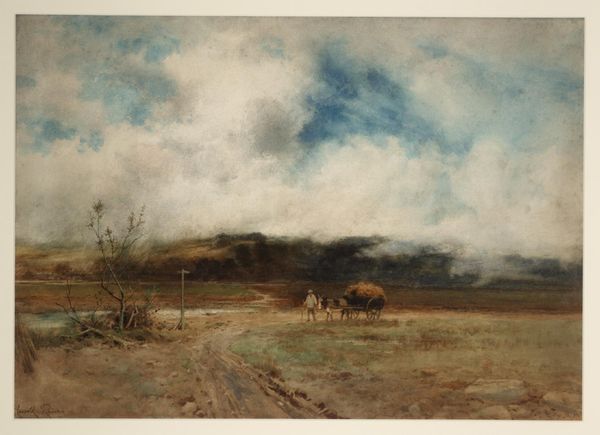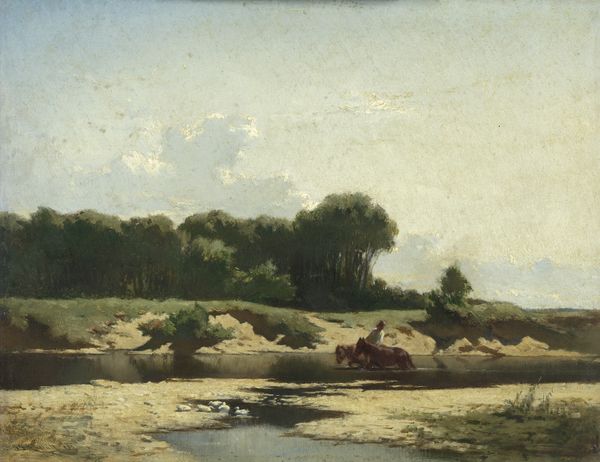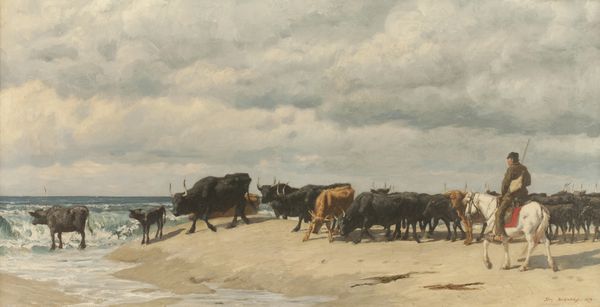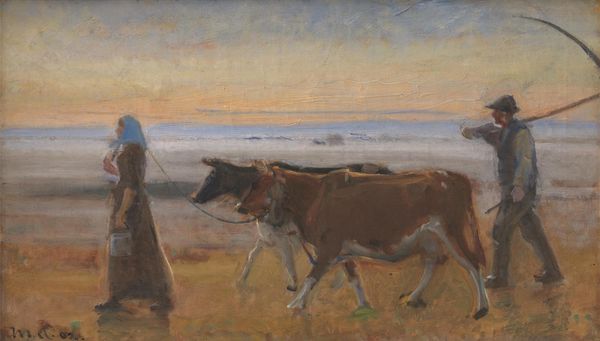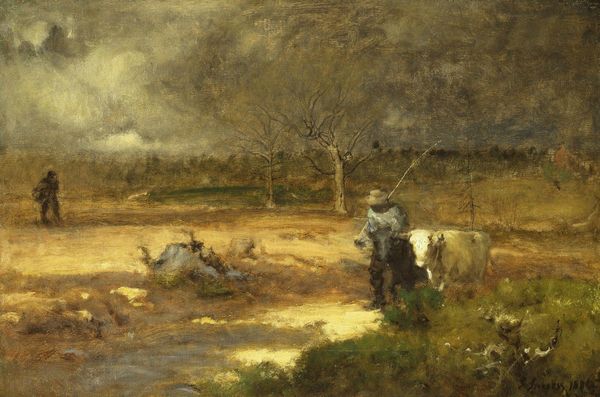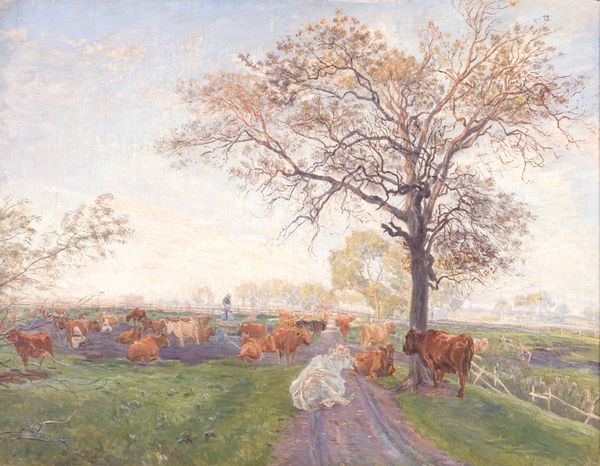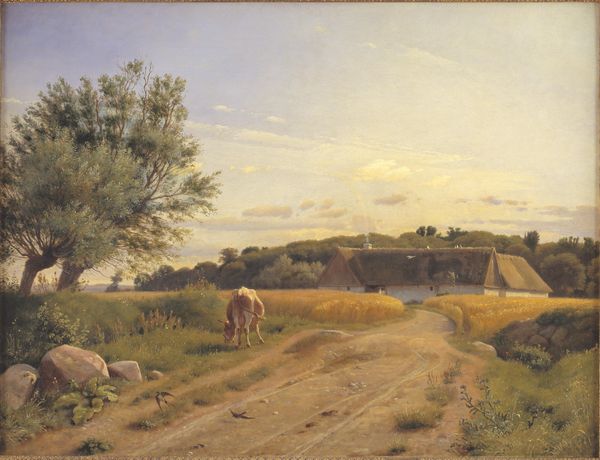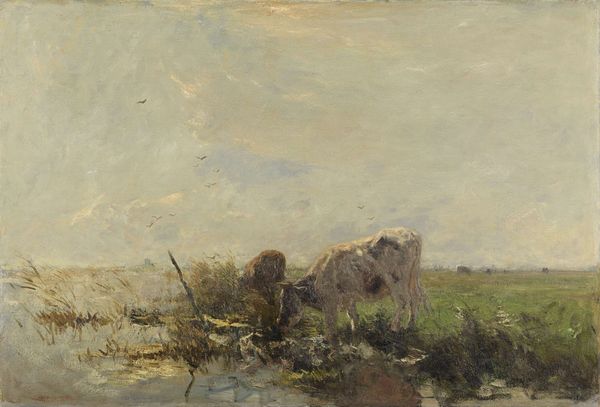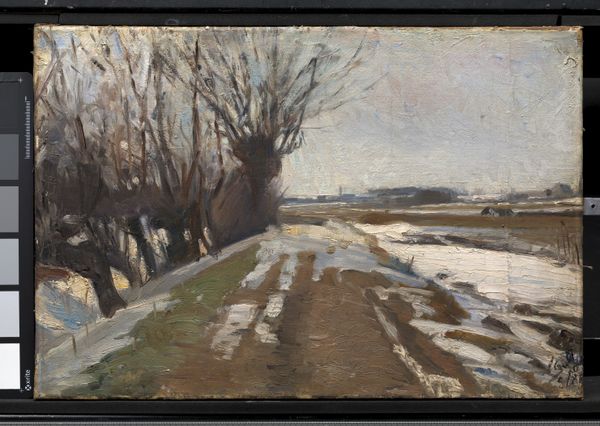
plein-air, oil-paint, paper, canvas
#
plein-air
#
oil-paint
#
landscape
#
paper
#
oil painting
#
canvas
#
romanticism
#
realism
Dimensions: 30 cm (height) x 41 cm (width) (Netto)
Curator: This is "Watering the Cattle on a Winter's Day," an oil on paper creation by Johan Thomas Lundbye, painted in 1848. It is held in the collection of the SMK, Statens Museum for Kunst. Editor: Immediately, I get a feeling of bleak tranquility. The composition is quite horizontal, emphasized by the low horizon line. The palette feels muted, like looking through fogged glass. It's very still. Curator: It's a classic example of Danish Golden Age landscape painting, capturing the essence of the national landscape, albeit in a starker season. Lundbye was quite devoted to painting en plein air; it’s hard to ignore the way light falls here, imbuing the mundane task with solemnity. Editor: Observe how Lundbye deploys color to guide our eyes. The brown of the cattle mirrors that of the earth, creating a visual echo that secures them within their environment. Note also the textural variations achieved through the brushwork; see the smoothness of the frozen pond in contrast to the rough, almost impasto rendering of the ground. Curator: Exactly! And think about the socio-political context, the rise of national romanticism. Lundbye is trying to capture the heart of Danish identity by representing everyday pastoral scenes. The scene is quiet but resilient. A statement about the inherent connection between land, animal, and the spirit of the Danish people. Editor: Though that nationalistic reading resonates, I also read it as a simple depiction of the animal's embodied reality. Lundbye isn't idealizing; he is depicting a straightforward activity in all of the cold's difficulty. It really feels like a work on the border of realism and romanticism. Curator: The beauty is that this tiny window shows that border, yes, but also points to a truth beyond genre—that sometimes the simplest, most grounded scenes contain the most potent and enduring reflections of humanity. Editor: Perhaps, through his composition and dedication to earthy colors, Lundbye highlights that even everyday rural labor can reveal profundity if the artist pauses and makes us truly *see* the activity for a moment.
Comments
No comments
Be the first to comment and join the conversation on the ultimate creative platform.
